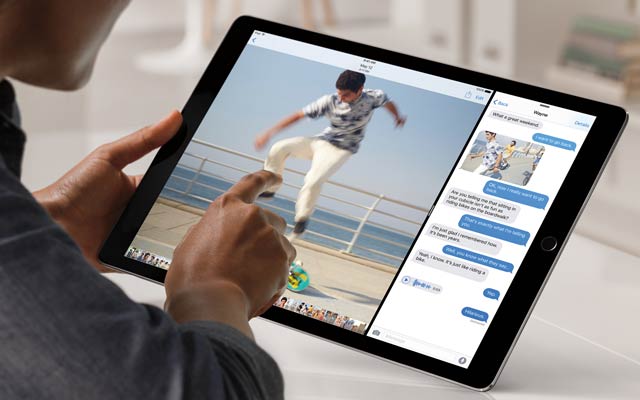
Apple is finally starting to get real about its iPad business.
The company said on Tuesday that it would release a refreshed version of its flagship iPad at a lower price. It was the first update to this iPad model since late 2014, although since then Apple has introduced two new (and more expensive) iPad versions that the company pitches as more useful for laptop-like tasks.
A two-and-a-half year gap is a remarkably long period of time between refreshes to its main iPad model — a trend also evident in Apple’s Mac business.
The iPad’s interregnum isn’t a sign of weakness but rather a recognition of reality for Apple and CEO Tim Cook, who has maintained for far too long that the iPad is a growth business. It most assuredly is not.
Unit sales of the iPad have dropped for 12 consecutive quarters. Apple in its most recent fiscal year sold the fewest iPads since 2011, the first full year the device was on sale. That is more than enough evidence to conclude that a “temporary” sales lull is no longer temporary. And not devoting time and money to annual product refreshes is the right approach to a business in permanent decline.
And that is perfectly fine. Not every business can grow to the moon. The iPad is a handy gadget for many people, and it’s incredibly profitable for Apple. Owning one can keep people hooked on other Apple devices and sell them on apps, Apple Music subscriptions and other Internet options that are an increasingly important element of Apple’s strategy.
But if the iPad isn’t a growth business anymore, someone should tell Cook.
“I still feel very optimistic about where we can take the product,” he told analysts in a January conference call. He said that the iPad was “not close” to “reaching a penetration point” and that beyond some temporary inventory issues that might hurt short-term sales, “I’m very bullish on iPad”.
Apple continues to brag about how happy people are with their iPads, the growing sales in countries like China and India and the company’s leading market share in tablets. All of that may be true, but few companies would have the gall to boast about being number 1 in a shrinking industry. Worldwide, sales of all tablets fell 15,6% in 2016, according to research firm International Data Corp.
The trouble with not acknowledging reality is Apple can’t reset expectations for investors and employees and realign its strategy to the reality that people are holding onto tablets and laptops longer before buying new ones.

That is holding back new device purchases, and it is a natural response to the rise of smartphones as the central computing device in many people’s lives — particularly younger people and those in China and India that Apple considers essential growth markets. The same trend hit the PC market first. Sales there have dropped for five consecutive years, and the decline was a harbinger of the tablet future.
Apple’s own research suggests people upgrade iPads roughly every three years while they buy new iPhones once every 18 months to two years. With that evidence, it makes sense for Apple to devote its attention to the iPhone and potential future projects in cars or augmented reality and scale back attention to the iPad and Mac lines. The company may already be doing so behind the scenes, and that’s why there was such a long gap between new iPad and Mac models.
Apple and rival Microsoft do seem to believe there is growth for tablets that can double as a laptop replacement. Apple is running commercials for the iPad Pro to stress its benefits compared with a conventional computer.
That’s fine. Microsoft and Apple have both benefited from selling these higher-priced tablets and so have a niche of people looking for this style of tablet-plus-laptop computer. But it’s important Apple doesn’t let pockets of iPad promise obscure the iTruth: tablets sales are in permanent decline. — (c) 2017 Bloomberg LP




